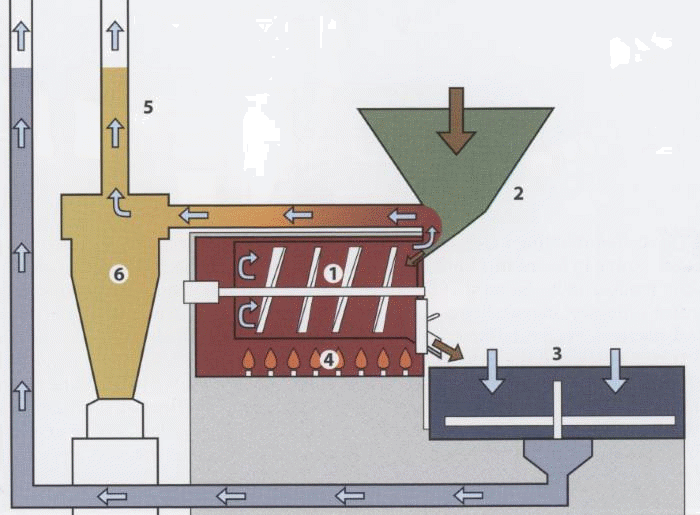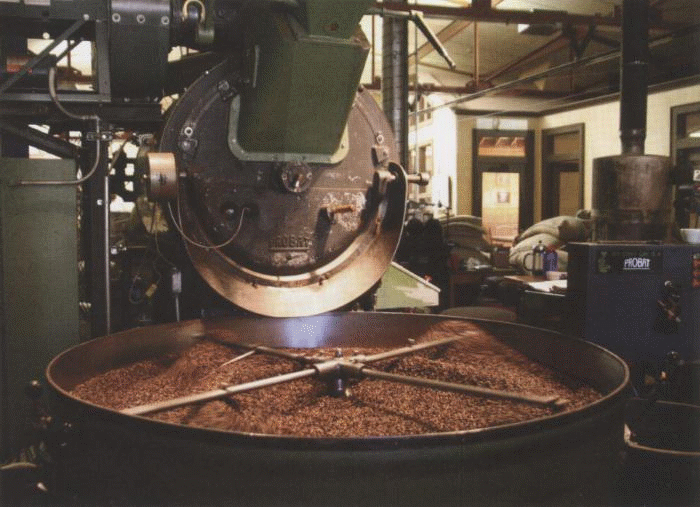
- •Introduction
- •1: Why We Roast Coffee Beans
- •2: Green-Coffee Chemistry
- •3: Green-Coffee Processing and Storage
- •4: Physical Changes During Roasting
- •Viennese
- •Italian
- •Inner-Bean Development
- •5: Roasting Chemistry
- •6: Heat Transfer in Coffee Roasting
- •7: Roasting Machine Designs
- •Indirectly Heated Drum
- •8: Progression of a Roast
- •It is vital to understand that the shape of the entire roast curve influences bean development.
- •9: Planning a Roast Batch
- •Intended Roast Time
- •10: The Three Commandments of Roasting
- •I. Thou Shalt Apply Adequate Energy at the Beginning of a Roast
- •II. The Bean Temperature Progression Shalt Always Decelerate
- •III. First Crack Shall Begin at 75% to 80% of Total Roast Time
- •It one intends to roast beyond the end of first crack, I recommend maintaining a steadily declining ror to prevent a strong crack that cools the roasting environment too rapidly.
- •11: Mastering Consistency
- •12: Measuring Results
- •Installing a Probe
- •Verification of Development Using a Refractometer
- •13: Sample Roasting
- •14: Cupping
- •15: Roasting, Brewing, and Extraction
- •16 Storing Roasted Coffee
- •17: Choosing Machinery
7: Roasting Machine Designs
A coffee-roasting machine is a specialized oven that transfers heat to coffee beans in a stream of hot gas while continually mixing the beans to ensure they roast evenly. Several types of roasters are in use today in the specialty coffee industry: classic drum roasters, indirectly heated drum roasters, fluid-bed roasters, recirculation roasters, and several others. Recirculation roasters return a portion of the exhaust air to the burner chamber to assist in heat generation for roasting. I will use the term “single-pass” to refer to machines that do not recirculate exhaust air. Each roaster design has distinct advantages and disadvantages, though no new design has eclipsed the popularity of the classic drum roaster, the design of which has not changed much in the past century.
Classic Drum
A classic drum roaster consists of a solid, rotating, cylindrical steel or iron drum laid horizontally on its axis, with an open flame below the drum. The flame heats both the drum and the air to be drawn through the drum. A fan draws hot gases from the burner chamber through the rotating beans and exhausts the smoke, steam, and various by-products of roasting and combustion out of the building through a vertical pipe, or “stack.” The drum’s rotation mixes the beans while they absorb heat by conduction from direct contact with the hot drum and convection from the air flowing through the drum.
At the completion of a roast, the machine operator opens the door to the drum, dumping the beans into the cooling bin, which stirs the beans while a powerful fan draws room-temperature air through the bean pile to cool it rapidly.
The best classic drum roasters have a double drum of two concentric layers of metal separated by a gap several millimeters wide. In a double drum, direct contact with the flame heats the outer drum, while the inner drum remains cooler. A double drum decreases conductive heat transfer and limits the risk of tipping, scorching, and facing. (Henceforth, these three are referred to in this text as “bean-surface burning”) If you buy a classic drum roaster, I strongly suggest finding one that has a double drum.
Advantages: The single pass of the roasting gas provides a clean roasting environment, and the drum serves as an effective heat-storage system, providing conductive heat transfer, especially during the first few minutes of a batch.
Disadvantage: Overheating the drum metal can easily lead to bean-surface burning.

Classic drum roaster. Beans (brown arrows) enter the roasting drum (1) through the loading tunnel
(2). After roasting, the beans cool in the cooling bin (3). Air (blue arrows) passes from the combustion chamber (4) through the roasting drum and exhausts through the chimney (5) by way of the cyclone (6), which traps chaff.

Single drum (left) and double drum (right)

Probat UG

To decrease costs, some manufacturers have abandoned the double drum and substituted a static
plate, or "heat shield,” between the flame and drum. Despite these manufacturers’ claims, single-layer drums with heat shields are usually interior to double drums. The problem is that the heat shield gets extraordinarily hot because it is stationary and in constant contact with the flame (A double drum’s rotation prevents any one area from overheating due to continual contact with the flame.) I measured one heat shield at 950°F (510°C) with an infrared thermometer during a typical roast. The heat shield interferes with the machine operator's control at a roast by radiating large quantities of heat even when the flame is off.
